The "S-Tank", a historical landmark?
The Strv-103 is one of a kind, concentrating so many innovative solutions and new ideas into one vehicle, that to this day it has left an unmistakable imprint in tank design, according to most experts. It was a rather original solution to the unique national defense issues of Sweden during the cold war. Sweden chose to adopt the tank best suited for the landscape it was to fight on, this, in turn, produced an unconventional solution: a self-propelled gun used as a main battle tank, classed and recognized as one despite its obvious lack of a turret. It succeeded in this category by concentrating many technological breakthroughs that rendered this paradox possible.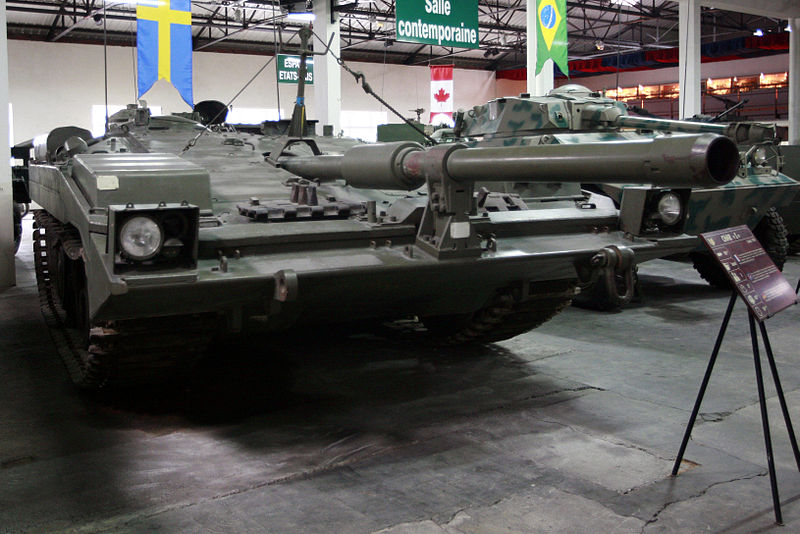
Development of the Strv-103
In the mid-1950s, the standard Swedish MBT was the British-built Centurion (Stridsvagn 81 to 104). But there were already proponents pushing for its replacement with a domestic tank. The consortium Landsverk, Volvo and Bofors proposed the KRV tank design, using a 155 mm smoothbore into an oscillating turret. It was eventually rejected as it was deemed to be too expensive, and the government turned once more to foreign designs. In the meantime, Sven Berge (of the Swedish Arms Administration) proposed the "Alternative-S" model based on the lowest possible silhouette, which would be far cheaper than the KRV and even some foreign designs. This design eliminated the turret, and the problems of gun elevation and depression found in vehicles without turrets were solved in an unorthodox way.Berge came up with the idea of a fully automated suspension able to provide vertical motion to the gun, assisted by an automatic transmission. After the plans were submitted, Bofors was asked to build a prototype of the suspension and drive train, which was then successfully tested. In 1958 came an order for two first production prototypes which were completed in 1961. In the meantime, the army ordered an initial pre-production batch of ten tanks.
After a few modifications, the "Alternativ S" was put into service as the Stridsvagn 103 (the number stands for being the 3rd tank armed with a 10 cm main gun in service). The full batch production was placed in 1965 and the first deliveries spanned from 1967 to 1971, with 290 machines.
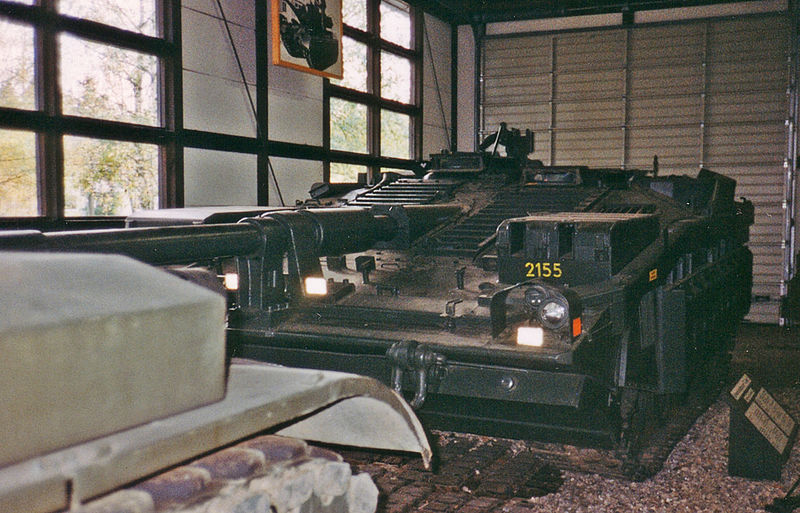
Design
The design was as radical as its roots suggest. Instead of having a standard suspension and some limited elevation and traverse as well as a propensity to strain the transmission when maneuvering like with many casemate-gun vehicles, the S-Tank was given hydropneumatic suspension and a fully automatic transmission. The gun was entirely fixed inside the turret, which allowed the driver in practice to be also the gunner when aiming the gun. The fixed gun also meant that the hull could be made as low as possible. There was a catch, however: this system forbade firing on the move. This was not seen as a great disadvantage, as practice had proven with the Centurion that the best accuracy was obtained while stationary.The gun, for practical reasons, was a Bofors 105mm L/62, firing the same ammunition as the British 105 mm L7 (50 rounds in store). It had an autoloader (placed at the rear bottom end) to allow a 15 rounds/minute and to reduce the crew to only two. Spent cartridges were ejected through a flap in the rear. The commander normally passed target information to the driver/gunner, which then aimed the gun and fired when stopped, but the commander had duplicate controls and override, plus control over smoke dischargers, in case of need for immediate action. There was enough room for a driver/radio operator facing rearwards, who could drive the tank in reverse if needed, keeping the front armor always pointed to the direction of the enemy.
Consoles were futuristic in appearance and were designed to be ergonomic. For aiming, the tank could traverse smoothly and precisely, despite obstacles in its path, and swivel on its own axis. The elevation/depression range was 22°, better than most MBTs of the time. In addition, the commander and driver both had the same set of sights but also controls to fire the gun or drive the tank. That also was very specific to the S-Tank. Secondary armament comprised two fixed 7.62 mm KSP 58 machine guns and one anti-aircraft 7.62 mm KSP 58 machine gun placed on the commander's cupola. A gyro-stabilized cupola model was added during production. In addition, slat armor could be added on the front to help defeat HEAT rounds. This armor was long kept secret.
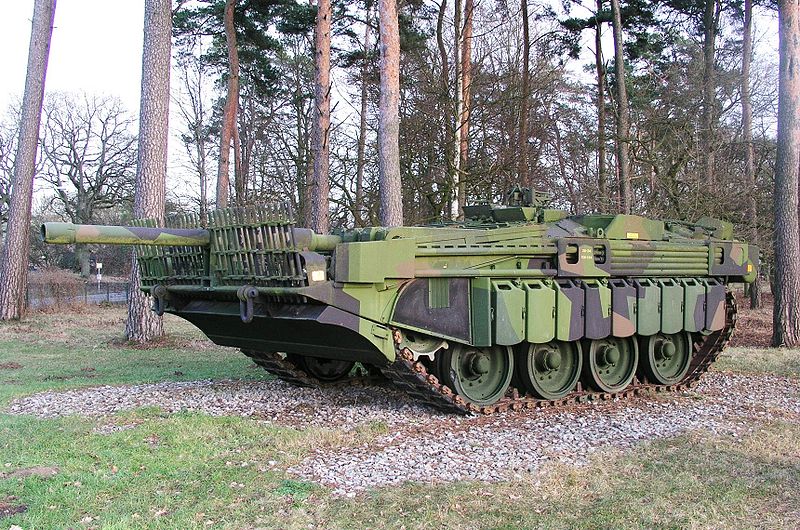
The hull was indeed also radical, and while it was made of standard RHA, and still relatively thick (90-100 mm on the front glacis) it formed such an angle that the thickness equivalent in direct fire was far greater. The hull could be lowered to a further 13 cm by adjusting the suspension. In addition, it had a folded dozer blade under the front hull to dig itself in the ground (acting also an extra protection). Placing the tank in a hull down position would have given a very little apparent height and quite a limited visual profile to the enemy observers. It was for example 3.5 inches lower than the T-64, but the latter paid for this extremely low silhouette with a very cramped interior.
The Strv-103 was fully amphibious, with a built-in floating screen and could swim after 20-25 min. of preparation. The speed when swimming was around 6 kph (3.7 mph), using the tracks motion to provide some steering. The changes included a new and upgraded frontal armor. Slat armor could be mounted at the front to help defeat HEAT rounds, but it was only to be fitted in the event of war because of its secrecy. Lately, nine jerry cans were added on each side, acting like add-on armor.
The powerplant also was tailored to the hull and was quite original. It was an arrangement of two engines: A flat 240 hp Rolls-Royce K60 opposed-piston diesel for slow cruising and maneuvering when aiming, plus a 300 hp Boeing 502 turbine for high-speed travel and cruising on rough terrain. The latter was found in practice underpowered and soon replaced by a Caterpillar turbine (490 hp) on the B version. This was also the first use of a turbine engine in a production tank, worldwide. With the Caterpillar, the combined output of the powerplant was 730 hp.
This provided an 18.3 hp/tonne power-to-weight ratio, a top speed on flat of 50 kph (31 mph) and a 390 km total range (240 miles). The diesel engine was coupled to 2 forward and 2 reverse speeds.The gas-hydraulic hydro-pneumatic suspensions were also very innovative. It served four large coupled rubber-clad roadwheels. There was a drive sprocket at the front and idler at the rear. Due to the narrow space allocated to the nose, the transmission was placed here, right before the driver. This suspension allows the gun (and whole hull) to depress enough in a hull down position that it presents virtually no frontal surface to the enemy while being still capable to spot and destroy opposing targets.
Variants
Strv-103 B
After the 80th tank delivered, operations showed the early production model was somewhat underpowered after all the added modifications compared to the prototype. To keep the performances up, a new Caterpillar 553 turbine was adopted. The latter could deliver 490 hp (365 kW) as compared to Boeing's 300 hp. The first batch was later called Strv-103A and then upgraded to the "B" standard powerplant.Strv-103 C
After 15 years of service, it was envisioned an upgrade to keep pace with advances in gunnery in the east. An improved fire control system was installed, but also a dozer blade for all vehicles (one per platoon before). In 1987-88 the aging Rolls-Royce diesel was replaced with 290 hp (216 kW) Detroit Diesel, with additional fuel tanks. The first-hit capability was much improved by the addition of a new laser rangefinder. Reactive or appliqué armor was studied in the early 1990s but this prospect was never carried out as it was decided to retire the model in favor of the Strv-122 (Leopard 2).Strv-103 D (prototype)
This last upgrade was performed in the mid-1990s, with a new fire-control computer, Gunner & commander thermal sights for low-visibility and night fighting, and a passive light enhancer for the driver. The suspension and engine receive the adjustment and minor modifications. This unique prototype was also even tested under remote control.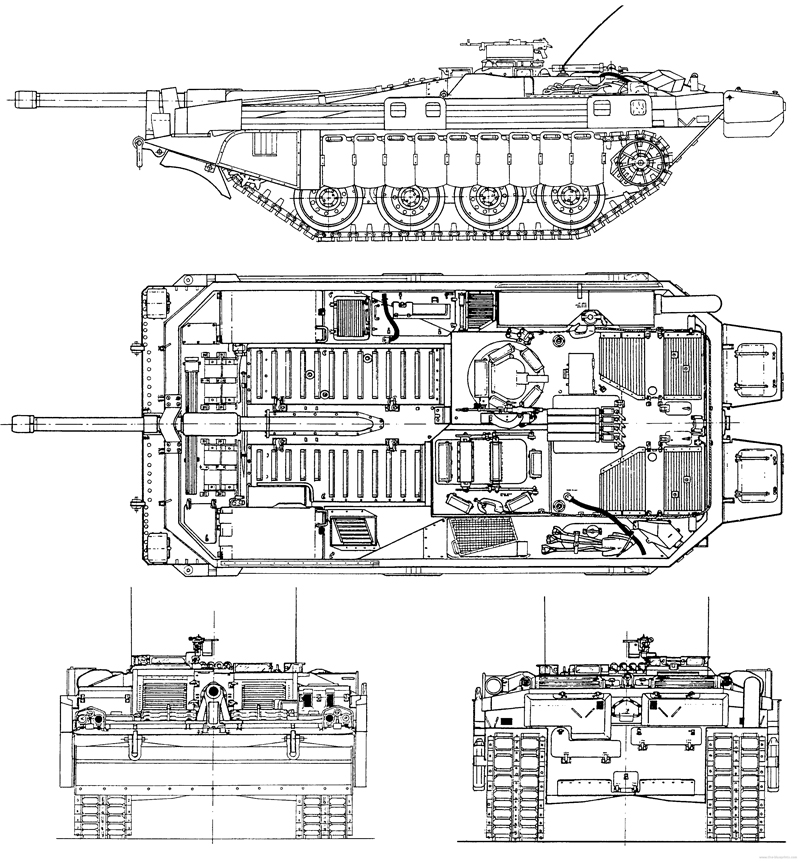
Operational history
The S-Tank was intended to deal with Soviet tanks but also to be suited for suited a landscape alternating rolling farmland in the south and high forests and tundra in the north, frozen or soggy depending on the season. It was to be embedded into earthen ditches, facing the enemy, then retire in fast reverse to join another tactical position. The whole purpose of the "S-Tank" was to fit in a defensive positioning doctrine. The last Strv-103C was retired in 1997. They were used for training. Nowadays, the single Sstrv-103D and several type C are displayed at the Swedish tank museum Arsenalen, all in running order. The Strv-103 was never tested in combat and never inspired another similar concept, although many of its innovations can be found on modern tanks, like the turbine engine in the M1 Abrams and T-80.Video: Documentary on the S-Tank
Links about the Strv-103:
The Strv-103 on Wikipedia Video archive of live test fire (Sw with En subtitles) showing the S-tank protection levelStrv-103 Lynx specifications | |
| Dimensions (L-W-H) | 8.99m (7.04m without gun) x 3.63m x 2.43m (29'5" (23'1") x 11'9" x 7'10" ft.in) |
| Total weight, battle ready (B/C) | 39.7/42.5 tonnes (15 600 lbs) |
| Crew | 3 (commander, gunners, rear driver/radio) |
| Propulsion | RR K60 diesel 240 hp (A-B) Detroit diesel 6V53T 290 hp (C) Boeing GT502 gas turbine, 300 hp (A) Caterpillar 553 gas turbine, 490 hp (B-C) |
| Top speed | 50 km/h (31 mph) |
| Range | 390 km/290 mi |
| Armament | Main: 105 mm Bofors L/62 50 rounds. 3 x KSP 58 cal 0.3 (7.62 mm) LMGs (1 AA) |
| Armor | From 90 to 100 mm classified (3.5 to 3.9 in) |
| Production | 290 |
Illustrations

S-Tank of the first serie, 1966.

Strv-103 B (1970)

Strv-103 C in the early 1990s
Gallery
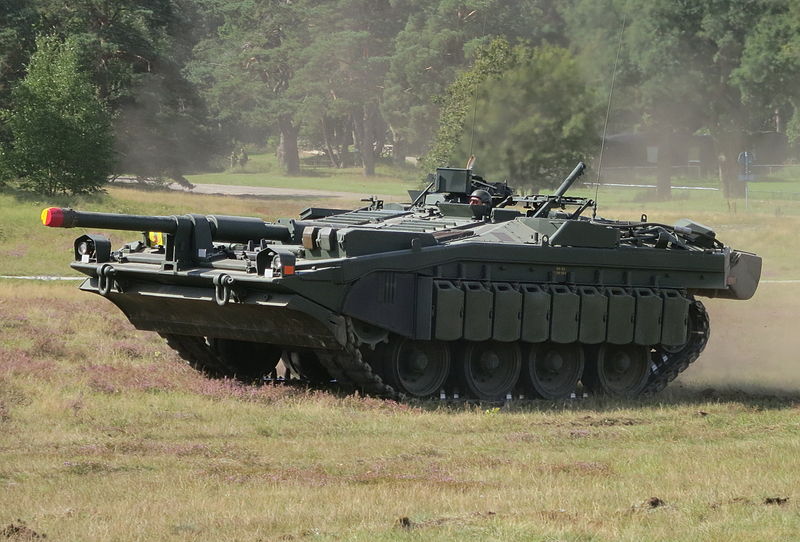
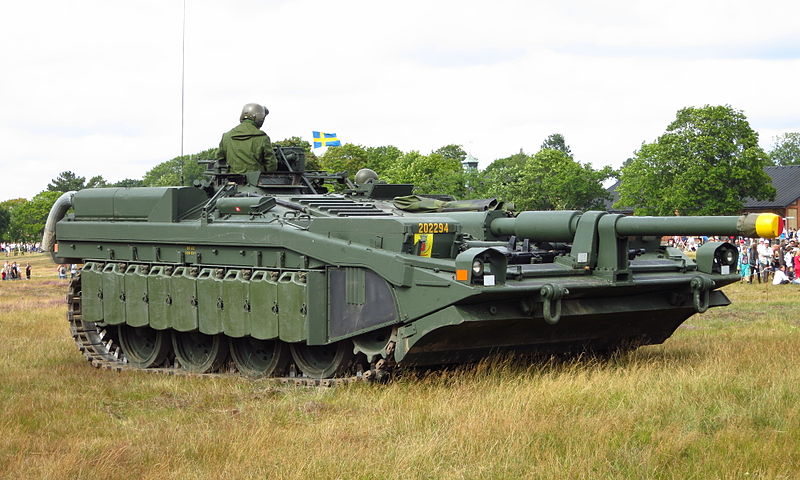
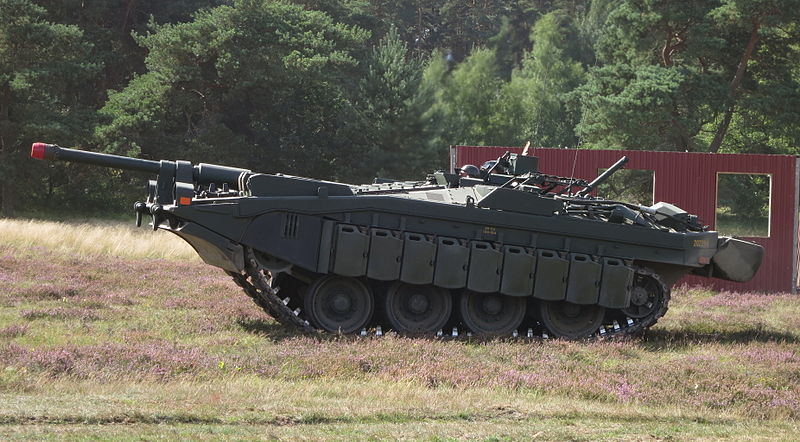
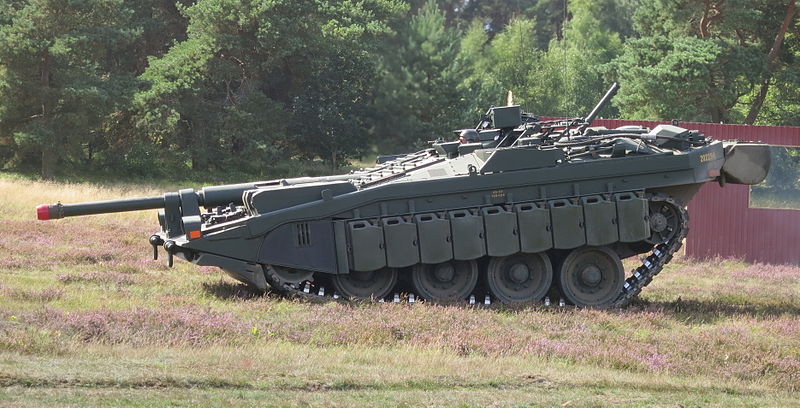
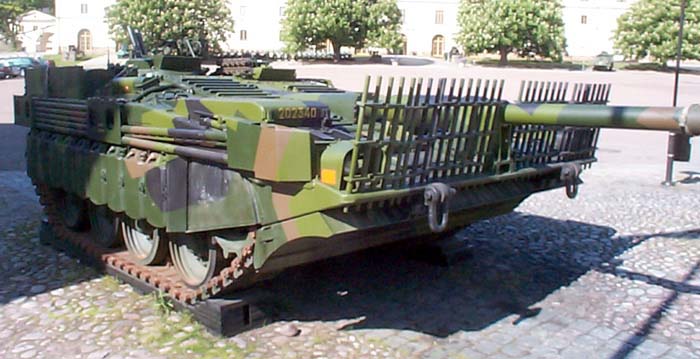

Cold War Tanks


































Cold war tanks posters

Cold War Main Battle Tanks

Cold War Soviet Army
Museums, Movies, Books & Games
The Tanks and Armor in pop culture
Tanks and armored vehicles in general are only really grasped when seen first person: The mass, the scale, it's all there. Explore also the way tanks were covered in the movie industry, in books and in video games.Movies:
Best tanks movie on warhistoryonline.com
On imdb.com
On bestsimilar.com/
miltours.com
liveabout.com/
watchmojo.com
Video Games:
pcgamesn.com
historyhit.com
levvvel.com
vg247.com/best-tank-games
mmobomb.com/
alienwarearena.com

